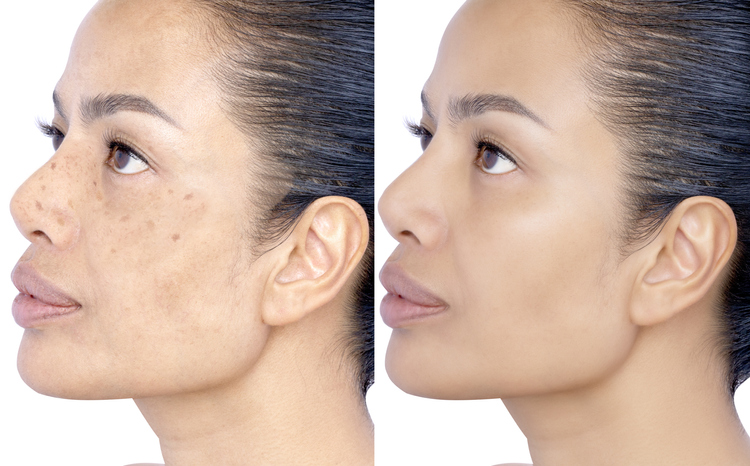Dark Circles in Texas & Louisiana
At Sanova Dermatology, we pride ourselves on delivering top-tier skin care through a combination of experience, education, and advanced technology. Our team of highly experienced physicians are dedicated to providing treatment for dark circles. We have convenient locations across Texas, including Houston, Pflugerville, Austin, Bee Cave, and Dripping Springs. We also serve Louisiana with locations in Metairie, Old Metairie, Uptown New Orleans and Baton Rouge.
If you get plenty of sleep and still manage to have the dreaded dark circles under your eyes, that’s not unusual. What appears to be under-eye circles are sometimes just shadows cast by puffy eyelids or hollows under your eyes that develop as a normal part of aging.
Heredity
Just like eye color, skin and hair color, heredity is the main cause of dark circles under the eyes. The genes that cause weakened capillaries in the skin around the eyes are to blame. Another inherited contributing factor is your skin tone, including transparency of the skin in the eye area. This thin eyelid skin can make dark circles appear more dramatic. Eyelid skin is so thin that you can see the color of the eyelid muscle showing through (which is purple). Look at every face you see and you will see that the lower eyelid is the darkest colored skin on the face. People with very thin skin have darker lower eyelids.

Allergies
Dark circles under the eyes can happen when the nasal passages become congested, which is a common symptom of allergies. When the nose is clogged, the veins around the nose become inflamed and blood flow slows down. The veins underneath the eyes may appear darker and show through the skin as the blood slows from congestion. In addition to allergies, colds and any other condition that causes nasal congestion may be the cause of dark circles under the eyes. In some instances, antihistamines and/or decongestant medications could be useful in alleviating these changes.
Visible Small Blood Vessels
Many people have hundreds of small blue veins visible on the lower eyelid. These blood vessels can cast a dark blue appearance to the lower eyelid. Vitamin K acts as an anticoagulant and is available in a number of topical preparations to help with visible vessels. In addition, certain laser skin rejuvenation procedures that specifically target and destroy blood vessels can be useful in treating vessels around the eyes that contribute to dark circles.
Pigmentation
Since the skin around the eye is so thin, increased pigment production will cause the area to become dark, causing dark circles under the eye. Pigmentation can also be caused by too much sun exposure. When you are subject to sun exposure and do not wear sun block, you will most likely develop a brown pigment on the lower eyelid. Pigmentation problems often run in families among people with skin of color, especially among African American, Hispanic, Asian, Arab, and Central Asian due to extra melanin in the skin. Regular and frequent application of sunscreen can prevent the changes caused from the sun. As well, certain bleaching creams and other skin lightening procedures can help lessen these dark patches.
Aging/Puffy Eyes
As you age, your skin thins and your face loses fat, not to mention collagen, elastin and hyaluronic acid. All of these substances contribute to the skin’s fullness, support and spring. This decrease in volume makes the reddish-blue blood vessels beneath your eyes more obvious. Also, what appear to be dark circles can sometimes be shadows—cast by puffy lids or under-eye hollows, also more common with age. Eye bags or puffy eyes will create a dark shadow beneath the bulge where the muscle is tethering the skin to the underlying bone. Restoring the volume lost with dermal fillers or sometimes an eyelid tuck – a minor surgical procedure also called a blepharoplasty – can help restore a more youthful appearance that treat these changes in the skin.
Hollow Eye
Hollow Eye Syndrome is actually not your typical “dark circles,” but a condition in which the entire lower eyelid appears “sunken in.” This can be a natural change that develops over time, or can be caused by other factors such as trauma or following a lower eyelid blepharoplasty where too much lower eyelid fat has been removed. The main cause of Hollow Eye Syndrome is a lack of orbital fat beneath the eyeball that allows the lower eyelid skin and tissue to sink in and appear darker. To correct this, the missing volume under the eye needs to be replaced. This can be obtained with dermal filler, surgically correcting the fracture and rearranging the fat or a fat transfer procedure.
Arcus Marginalis Deformity
This is a deep depression beneath the lower eyelid that many people have. It’s first noticed in childhood and usually inherited. The arcus marginalis muscle anchors the the lower eyelid skin to the bone of the eye socket. The skin of the eyelid above this muscle falls over and downward creating a deep shadow causing a dark circle under the eye.
Contact Sanova Dermatology
If you would like more information, or if you would like to schedule a consultation with one of our experienced dermatologists, please click here.
